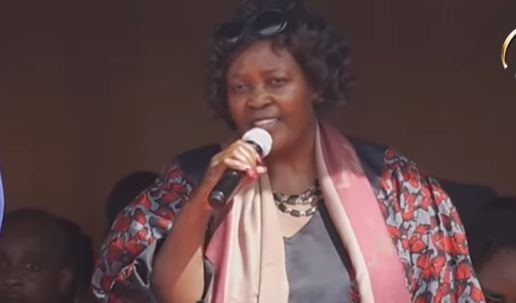Long renowned for nice beaches and a marine park, Malindi is also home to one of the oldest and most unique animal and bird orphanages, which is located at the heart of the town.
Falconry of Kenya Greif Vogel Park and Eagle Park hosts diverse species of animals, including a huge, 128-year-old turtle that is ageing gracefully under the care of well-trained caretakers.
Apart from tortoises, there are also crocodiles young and old, snakes including a huge python, the venomous puff adder and black mamba, monitor lizards, bushbabies and birds such as hawks, eagles and owls.
It may seem like a tourism attraction that has been and will always be, but the park is an orphanage, where rescued animals are given care, some for a lifetime.
Michael Kahindi, the man behind the steering of the animal orphanage, has to make sure all of them are properly fed, treated and alive.
Every day, Kahindi and his team wake up early to feed the animals and birds, ensuring that they are healthy.
“We keep these animals here to support them. It's like a rescue centre. We get them with injuries, or when they fall down due to strong winds, we keep them here. Those which can be taken back to the forest are returned to the wild,” he said.
Animals and birds are meant to live in the forest naturally to enjoy their lives the same way human beings live in homes.
However, at times of crisis like when they are injured, they could suffer to death if not lucky to be found in that state.
This has always been a challenge for many wild animals, reptiles and birds.
Kahindi said birds which suffered broken wings, legs, lost an eye and cannot survive in the forest are retained at the centre, and they do breed, after which their chicks are returned to the wild while they remain at the orphanage forever.
HOW IT STARTED
The Falconry of Kenya was started in 1980 by an Irish man as a hobby, but when he found the number of animals being brought by local people was rising day in day out, he decided to make it a rescue centre.
Today, the centre still stands tall, though with many challenges.
Kahindi said for sustainability, they depend on entry fees charged at the gate and individual sponsors who come to support the rescue centre.
An adult Kenyan is charged Sh200, while a Kenyan child pays Sh100. Residents, on the other hand, are charged Sh400 and children Sh200.
Non-residents part with Sh500, while children are charged Sh250.
Kahindi said the Covid-19 pandemic really hit them hard because they depend on foreigners for survival, but they were left high and dry ever since the pandemic struck.
“Right now, we are struggling to get donations from local people who visit, and it’s what must finance these animals,” he said.
A look at the structures housing the animals and the general infrastructure at the centre clearly shows some are dilapidated and require renovation.
However, due to centre's financial constraints, it has been difficult for the management to renovate, though some sponsors such as Lmagiro conservation and others, have tried to renovate some of the facilities.
APPEAL FOR SUPPORT
Kahindi said at the center, there are more than 60 animals and birds, which require food that costs more than Sh2,500 a day.
“During such times, it is difficult to raise such an amount, so we rely on any individual who can volunteer to support us to get their food and other needs,” he said.
Most structures at the centre are in a bad state, he admitted, but they got donations from a few people and are now beginning to do renovations.
For the place to regain its stature, Kahindi said the orphanage requires about Sh500,000 to renovate the cages of snakes and birds.
“I would like to appeal to donors to come out in large numbers to help us in maintaining these animals to prevent them from being affected more,” he said.
"They were brought here because of problems and it will be a challenge if they are here and there is no money to sustain them."
Every year, more than 20 animals from the centre are returned to the wild.
Kahindi said those visiting the centre are educated on the importance of not hurting animals such as snakes because some have a negative perception and always want to kill them whenever they spot them.
He has been working at the centre for 15 years and trained three others, who can now handle the animals perfectly even when he is not around.
Currently, they get between 25 and 30 guests per day, nearly all Kenyans. Previously they could get more than 100 visitors daily and most were foreigners.
The most vulnerable animal they rescued was the fish eagle, which came with a broken wing. They repaired it and it’s doing well, though it cannot go back to nature because its flight is not sufficient to survive in the wild.
SUPPORTING THE PARK
During our visit, we met Silvia Pirelli, the owner of Lmagiro conservation in Malindi, who is one of the sponsors of the centre.
Pirelli said she first visited the centre more than 20 years ago. She fell in love with the place and helped build it up.
She however said after she moved to Lmagiro conservation in Mere, the place became lonely and vacated.
“I came back two years ago and saw the condition here after corona and everything, so I decided to help and get some of my members like Million Footprints, Malindi Info [to support],” she said.
"In Germany, we have a lot of people who are ready to help they are already in conservation and nature protection."
Pirelli feels the rescue centre is important to help the animals and educate people on the importance of not killing them when they see them in the wild.
She said many people are killing eagles just for fun but after visiting the rescue centre, they have a change of heart and perception.
“When you have the eagle sitting on your hand, you can’t kill it anymore, you make friends with these animals and that’s usually useful,” she said.
She said people who visit the centre learn a lot, especially about the snakes, and find that they do not have to kill every snake.
At the moment, they really need help, with some of those answering the call including African buffalo safari and Sawasawa academy royal complex.
“Every time I ask for something, they give me Sh500 or Sh200. They know the funds reach here and help in doing repairs slowly,” she said.
She said the place is beautiful for birds and animals that are rescued, though there are controversies surrounding the place as people feel they are not supposed to be kept there.
Apart from the centre, there is a bar and cafe, where people can come and relax in a beautiful cool environment thanks to the trees.













